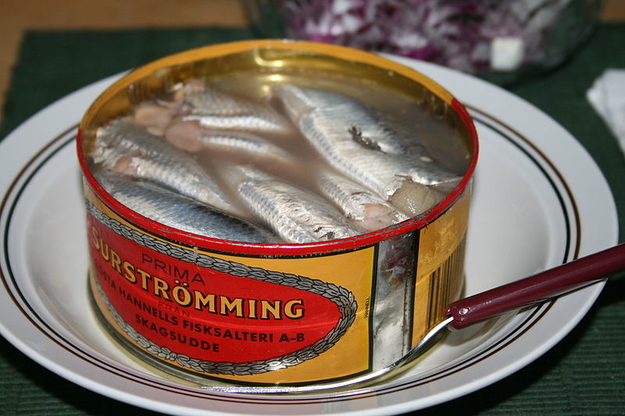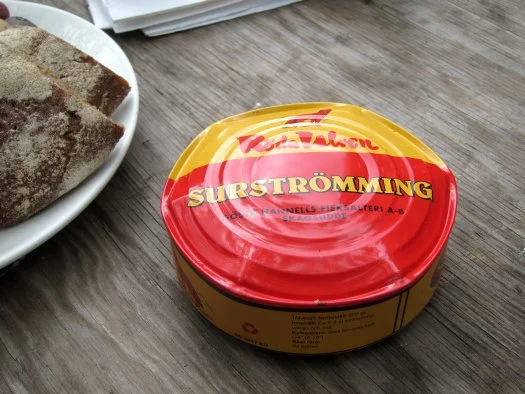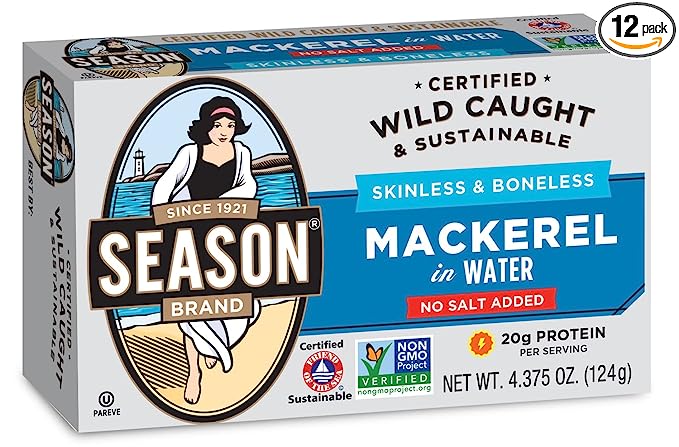Surströmming: Exploring Sweden’s Infamous Fermented Fish

Introduction
Surströmming is a traditional Swedish delicacy that has gained notoriety worldwide due to its strong and pungent odor. This fermented Baltic Sea herring is a staple in Swedish cuisine and holds a special place in the hearts of locals. In this article, we will explore the history, preparation, controversies, health benefits, and cultural significance of surströmming.
1. What is Surströmming?
Surströmming is a type of fermented fish, primarily consisting of Baltic Sea herring. The name “surströmming” translates to “sour herring” in English. The fermentation process involves storing the herring in barrels for several months, allowing it to develop a distinct flavor and aroma.
2. The Traditional Preparation Process
The preparation of surströmming involves carefully fermenting the herring. After being caught, the herring is gutted and then layered with salt in barrels. The barrels are tightly sealed and left to ferment for several months. This process leads to the production of acids and gases, which contribute to the unique characteristics of surströmming.
3. The Unique Smell
Surströmming is infamous for its overpowering smell, often described as a combination of rotting fish and strong cheese. The fermentation process produces various compounds, including butyric acid, which gives surströmming its pungent odor. Opening a can of surströmming can be quite an experience due to the strong smell it releases.
4. The Controversy Surrounding Surströmming
Surströmming has sparked debates and controversies both within Sweden and internationally. Some people find the odor unbearable, while others consider it a cultural delicacy. The Swedish Transport Agency has even classified surströmming as a hazardous substance due to its potential to release gas and explode if mishandled during transportation.
5. Health Benefits and Nutritional Value
Despite its strong smell and divisive reputation, surströmming offers several health benefits. It is a rich source of omega-3 fatty acids, which are essential for heart health and brain function. Surströmming also contains high levels of protein, vitamins, and minerals, making it a nutritious choice.
6. How to Eat Surströmming
Eating surströmming is a unique experience that requires some preparation. The fermented herring is traditionally served with crispy bread, potatoes, onions, and sour cream. To enjoy surströmming, you typically place a piece of herring on the bread, add toppings, and take a bite. The combination of flavors and textures creates a distinctive taste.
7. Popular Surströmming Recipes
Surströmming can be used in various recipes, adding its distinct flavor to traditional Swedish dishes. Some popular recipes include surströmming sandwich, surströmming stew, and surströmming pizza. These dishes showcase the versatility of surströmming and how it can be incorporated into different culinary creations.
8. Surströmming Festivals and Celebrations
Surströmming has become an integral part of Swedish culture and is celebrated through festivals and gatherings. The most famous event is the “Surströmmingsskiva” (Surströmming Party) held in late summer, where people come together to enjoy surströmming, sing, dance, and celebrate the Swedish tradition.
9. Surströmming in Popular Culture
Surströmming has made its way into popular culture, featuring in television shows, documentaries, and social media challenges. Its distinct aroma and reputation for being an acquired taste have attracted curiosity from around the world, resulting in a significant online presence and discussions among food enthusiasts.
FAQs
- Is surströmming safe to eat?
- Yes, surströmming is safe to eat. However, it is important to handle and open the cans with caution due to the pressure build-up during fermentation.
- Can you buy surströmming outside of Sweden?
- Yes, surströmming is exported and can be purchased in certain specialty stores or online. However, be prepared for shipping restrictions and potential challenges due to its strong odor.
- How long does surströmming last?
- Surströmming can have a long shelf life if properly sealed. Unopened cans can last for several years. Once opened, it is recommended to consume the contents within a few days.
- Can surströmming be eaten by vegetarians?
- No, surströmming is a fish-based product and not suitable for vegetarians or vegans.
- Are there any alternatives to surströmming?
- While surströmming has a unique taste, other fermented fish products, such as Korean kimchi or Japanese narezushi, offer similar experiences.
Conclusion
Surströmming is a polarizing Swedish delicacy that has become a symbol of cultural heritage. Despite its intense smell and controversial reputation, surströmming holds a special place in Swedish cuisine and traditions. Whether you are an adventurous food enthusiast or prefer milder flavors, surströmming offers a fascinating exploration of unique culinary experiences.
Why is Surströmming So Expensive: Exploring the Peculiarities of a Nordic Delicacy

1. Introduction
Surströmming, a traditional Swedish delicacy, has gained international fame for its distinctive flavor and pungent aroma. Despite its humble origins, surströmming has become a sought-after food item that commands a high price. In this article, we will explore the reasons behind the expensive nature of surströmming, delving into its unique fermentation process, cultural significance, limited availability, demand from international markets, quality assurance, branding efforts, and various cost factors that contribute to its price.
2. What is Surströmming?
Surströmming is a type of fermented Baltic herring that originates from the northern parts of Sweden. The name itself translates to “sour herring” in English, aptly describing the flavor profile of this delicacy. The fermentation process involves storing the herring in barrels for several months until it develops a distinctively strong and tangy taste. Surströmming is typically enjoyed by opening the can or jar containing the fish, releasing the pungent odor, and serving it with traditional accompaniments like potatoes, onions, and flatbread.
3. The Unique Fermentation Process
The key to surströmming’s unique flavor lies in its fermentation process. Fresh Baltic herring is caught during the spring season when it contains a higher fat content, making it ideal for fermentation. The fish is then gutted, but the heads and skins are left intact to facilitate the fermentation process. The herring is then packed into barrels layered with salt and left to ferment for several months. During this time, the fish undergoes lactic fermentation, which imparts the characteristic sour and pungent taste.
4. Cultural Significance and Traditions
Surströmming holds a special place in Swedish culture and traditions. It is often consumed during festive occasions, such as Midsummer celebrations, where families and friends gather to enjoy the unique flavors together. Sharing surströmming has become a social event, fostering a sense of community and cultural identity. The tradition of consuming surströmming dates back centuries and has been passed down through generations, preserving the heritage associated with this peculiar delicacy.
5. Limited Availability and Production Challenges
One of the factors contributing to the high price of surströmming is its limited availability. The production of surströmming is a meticulous and time-consuming process, requiring specific environmental conditions and expertise. Additionally, surströmming can only be produced in certain regions with access to fresh Baltic herring. The combination of these factors restricts the overall production volume, leading to a scarcity of surströmming in the market.
6. Demand from International Markets
Surströmming’s popularity has transcended Swedish borders, attracting interest from international markets. The unique and adventurous nature of this delicacy has garnered attention from food enthusiasts and curious individuals worldwide. The increasing demand from abroad has further driven up the price of surströmming, as it needs to be imported, making it a niche and sought-after product for those seeking a truly authentic Nordic culinary experience.
7. Quality Assurance and Regulations
To ensure the authenticity and quality of surströmming, strict regulations are in place. The production and packaging processes are closely monitored to maintain the integrity of the product. The herring must meet specific criteria, and the fermentation process must adhere to traditional methods. These quality assurance measures, although necessary, contribute to the overall cost of producing surströmming, thus impacting its price.
8. Branding and Marketing Efforts
Several Swedish companies have successfully built strong brands around surströmming, capitalizing on its uniqueness and exclusivity. Through effective marketing campaigns and strategic positioning, these companies have managed to create a perceived value for surströmming, further increasing its market price. The branding efforts have transformed surströmming from a humble traditional dish into a premium delicacy that appeals to adventurous food enthusiasts and connoisseurs.
9. Cost Factors and Price Determination
Various factors contribute to the expensive nature of surströmming. The limited availability, labor-intensive production process, import costs for international markets, quality assurance measures, and branding efforts all play a role in determining the final price. Additionally, the premium status of surströmming as a niche and exotic delicacy further justifies its higher price point, making it an indulgence for those willing to experience its unique taste.
10. The Surströmming Experience
Partaking in the surströmming experience is not merely about the consumption of the fish itself; it is an immersive sensory journey. The aroma that fills the air upon opening the can or jar can be intense and overpowering, heightening the anticipation of what lies inside. The flavors, while challenging to the uninitiated, can be an acquired taste for those willing to embrace its distinctiveness. The overall experience, from the initial aroma to the interplay of flavors, contributes to the allure and fascination surrounding surströmming.
11. Surströmming’s Global Impact
While surströmming may be an acquired taste for many, its impact on Nordic culture and international culinary exploration cannot be ignored. The popularity of surströmming has put Sweden on the map as a gastronomic destination, attracting visitors who seek authentic and unconventional food experiences. Furthermore, surströmming has become a symbol of cultural identity and pride, showcasing the traditions and heritage of the Nordic region to the world.
12. Surströmming Alternatives
For those intrigued by the concept of surströmming but wary of its strong flavors, there are alternative options available. Some variations include milder versions of fermented fish or herring-based dishes that offer a toned-down experience while still capturing the essence of Nordic cuisine. Exploring these alternatives allows individuals to appreciate the heritage and flavors without fully immersing themselves in the intensity of surströmming.
13. Conclusion
Surströmming’s reputation as an expensive delicacy stems from a combination of factors, including its unique fermentation process, limited availability, demand from international markets, quality assurance measures, branding efforts, and various cost factors involved in its production. While the high price may deter some, surströmming remains an intriguing and revered food item that encapsulates the cultural traditions and culinary heritage of Sweden.
FAQs
1. Can I find surströmming outside of Sweden? Yes, surströmming can be found in select specialty stores or ordered online for international delivery. However, availability may vary depending on your location.
2. What does surströmming taste like? Surströmming has a strong, tangy, and pungent flavor that can be overwhelming for some. It is often described as an acquired taste due to its unique fermentation process.
3. How should I eat surströmming? Surströmming is traditionally enjoyed with boiled potatoes, onions, and thin bread. It is common to create open-faced sandwiches by combining these ingredients.
4. Are there any health concerns associated with surströmming? Surströmming is safe to consume when handled and prepared correctly. However, due to its strong smell and pungent taste, it is recommended to eat surströmming outdoors or in well-ventilated areas.
5. Can surströmming be stored for a long time? Yes, unopened cans or jars of surströmming can be stored for several years. However, once opened, it is best to consume it within a few days to maintain its freshness and flavors.
